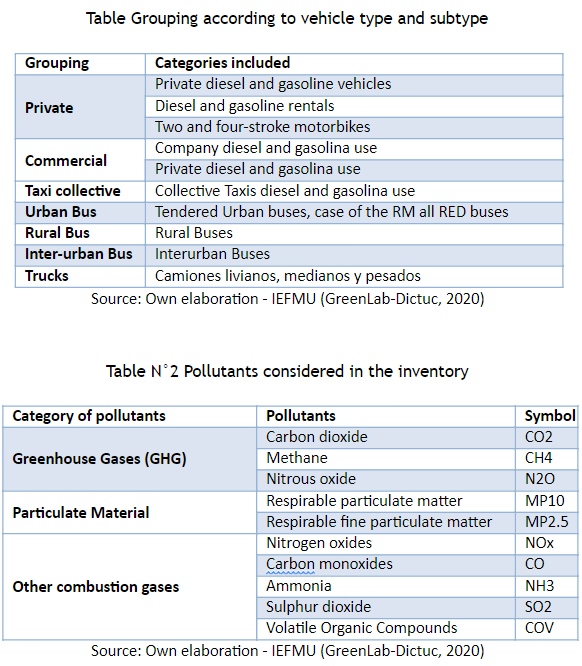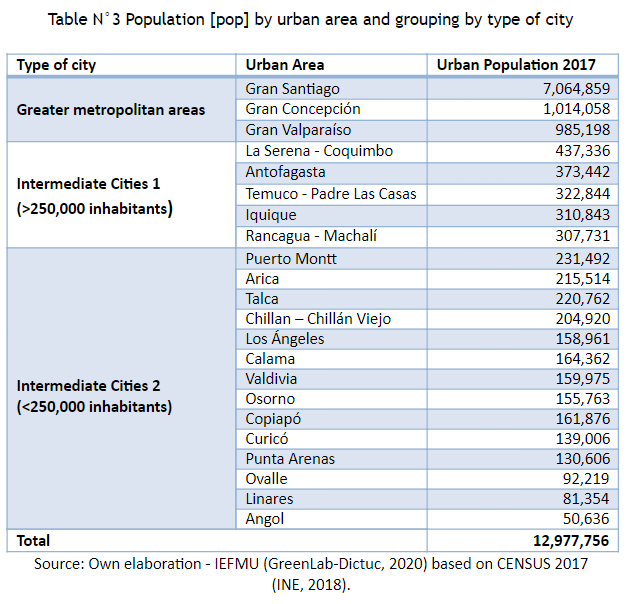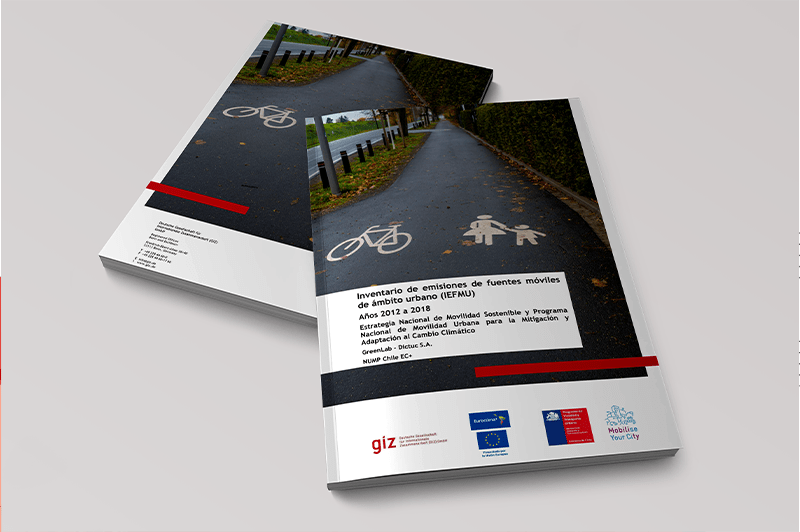The study was carried out under the framework of the National Urban Mobility Policy conducted through EUROCLIMA+.
April 9, 2021, Santiago, Chile - The Ministry of Transport and Telecommunications of Chile, through its Roads and Urban Transport Programme (SECTRA), published on Monday the Inventory of Emissions from Urban Mobile Sources (IEFMU). 2012 a 2018. This study will help strengthen urban mobility diagnostic capacity to develop Chile's National Urban Mobility Policy (NUMP), an effort being carried out under the EUROCLIMA+ programme.
The study compiles, systematises and analyses information on emissions from mobile sources at the urban level for the 22 main cities of Chile. This was built from calculations made with MODEM software, which estimates the atmospheric emissions of pollutants caused by motorised transport based on the modelling of transport systems in urban areas.
"This Inventory is an essential new tool available to researchers, planners and institutions that address environmental mobility issues. With a Bottom-Up approach, based on historical emissions data from the RETC/MMA, this inventory will strengthen the mechanisms for action, planning and response to the global climate crisis," said Alvaro Salas, Analyst at SECTRA, Ministry of Transport and Telecommunications of Chile.
In 2018, SECTRA began collaborating with EUROCLIMA+ and with technical support from GIZ to develop a National Strategy for Sustainable Mobility and a National Urban Mobility Programme for Climate Change Mitigation and Adaptation in Chile, instruments that constitute Chile's NUMP. With this initiative, the country will have conceptual bases and national guidelines for sustainable mobility and will develop technical and financial instruments that will help materialise the objectives of this transport policy.
For countries to reduce their greenhouse gas (GHG) emissions, decision makers need systematic and science-based approaches to better identify, select and evaluate climate change mitigation and adaptation measures and initiatives. The inventory published by SECTRA will strengthen their diagnostic and planning capabilities for limiting emissions from mobile sources.
Of the 22 urban areas analysed in the study, 17 have runs covering the 2005 to 2018 time series, while the remaining 5 have estimated emissions for the 2012-2018 time series.
The analysed inventory was classified according to type and subtype of vehicles, pollutants considered, as well as the population by urban areas and by type of city, as shown in the following tables:


The results of the study reveal that most of the polluting emissions (97%) of atmospheric emissions correspond to CO2 emissions, as is to be expected from a transportation system that relies on internal combustion engines. Although most emissions are concentrated in large metropolitan areas (with 76% of CO2 emissions concentrated in this type of city), the study shows that the largest proportional increases in emissions are occurring in intermediate cities with more than 250,000 inhabitants.
The difference in emissions by type of city is not only explained by a larger population, but also by other factors, such as the fact that travel distances are greater in large cities as a result of the larger territorial extension, the preference for private transport over public transport, as well as the greater mobility activity associated with commercial productive sectors and services.
"This study is part of a series of studies on GHG emissions from the transportation sector. We have completed the initial inventory, to then move on to the generation of prospective scenarios and finally generate a mechanism to facilitate the reporting, monitoring and verification of emissions from the sector. As a whole, this series of studies is very useful for the policies and actions that Chile is developing to address climate change," explained Pablo Juica, Sustainable Urban Mobility Advisor at GIZ Chile.
To connect sustainable urban mobility with Chile's commitments set forth in the Nationally Determined Contributions (NDCs), Chile's NUMP project proposes a governance model for sustainable mobility that integrates a multisectoral and multilevel approach.
To learn more about the project "National Strategy and Programme for Sustainable Mobility for Climate Change Mitigation and Adaptation in Chile", click here.
About EUROCLIMA+
EUROCLIMA+ is a programme funded by the European Union to promote environmentally sustainable and climate-resilient development in 18 Latin American countries, particularly for the benefit of the most vulnerable populations. The Programme is implemented under the synergistic work of seven agencies: the Spanish Agency for International Development Cooperation (AECID), the French Development Agency (AFD), the Economic Commission for Latin America and the Caribbean (ECLAC), Expertise France (EF), the International and Ibero-America Foundation for Administration and Public Policies (FIIAPP), the German Society for International Cooperation (GIZ), and UN Environment.
For more information:
This email address is being protected from spambots. You need JavaScript enabled to view it.

